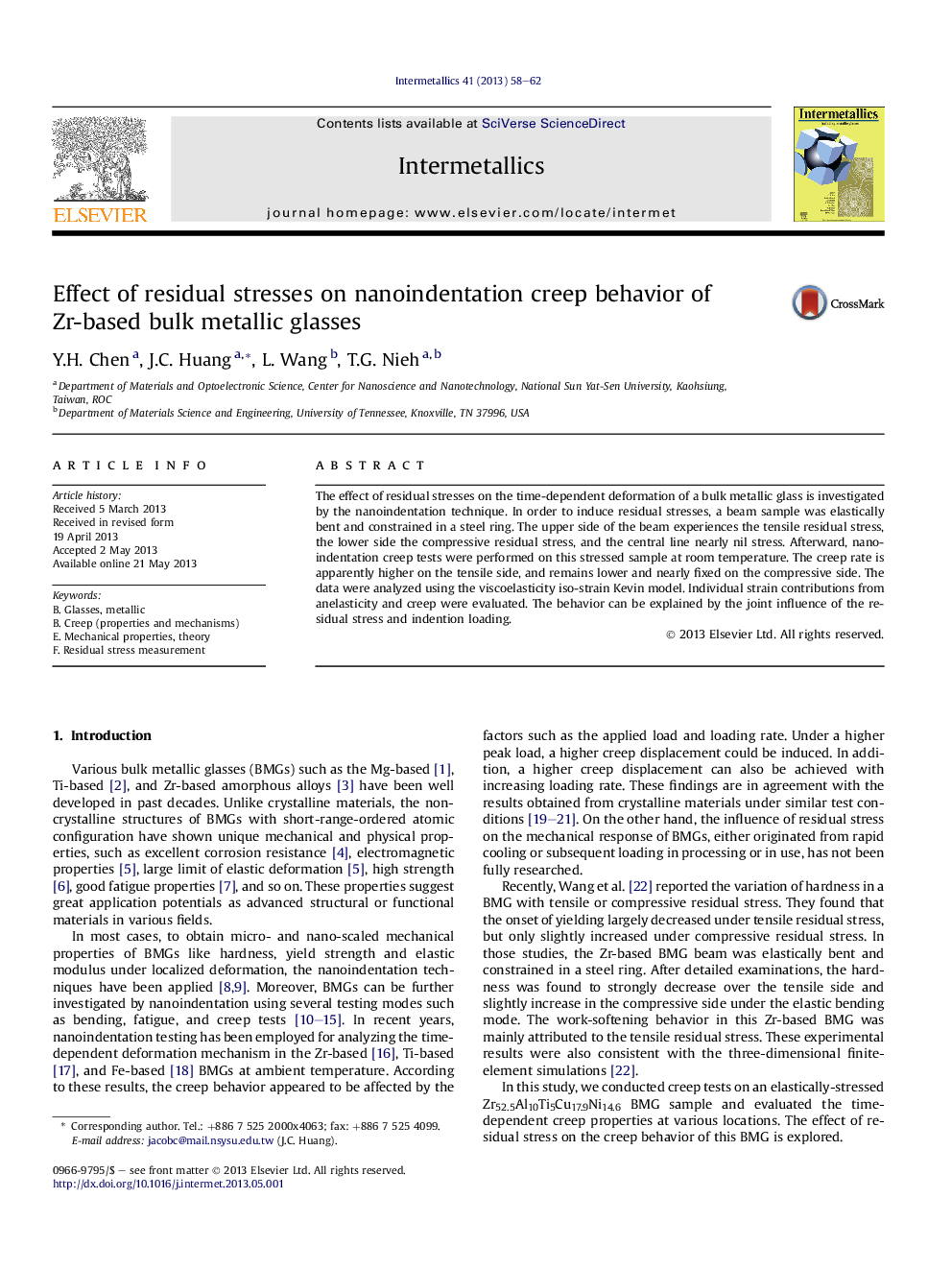| Article ID | Journal | Published Year | Pages | File Type |
|---|---|---|---|---|
| 1600167 | Intermetallics | 2013 | 5 Pages |
•The effect of residual stresses on metallic glass creep is investigated.•Nanoindentation creep tests were performed at room temperature.•The creep rate is apparently higher on the tensile side.•The data were analyzed using the viscoelasticity iso-strain Kevin model.
The effect of residual stresses on the time-dependent deformation of a bulk metallic glass is investigated by the nanoindentation technique. In order to induce residual stresses, a beam sample was elastically bent and constrained in a steel ring. The upper side of the beam experiences the tensile residual stress, the lower side the compressive residual stress, and the central line nearly nil stress. Afterward, nanoindentation creep tests were performed on this stressed sample at room temperature. The creep rate is apparently higher on the tensile side, and remains lower and nearly fixed on the compressive side. The data were analyzed using the viscoelasticity iso-strain Kevin model. Individual strain contributions from anelasticity and creep were evaluated. The behavior can be explained by the joint influence of the residual stress and indention loading.
Graphical abstractFigure optionsDownload full-size imageDownload as PowerPoint slide
